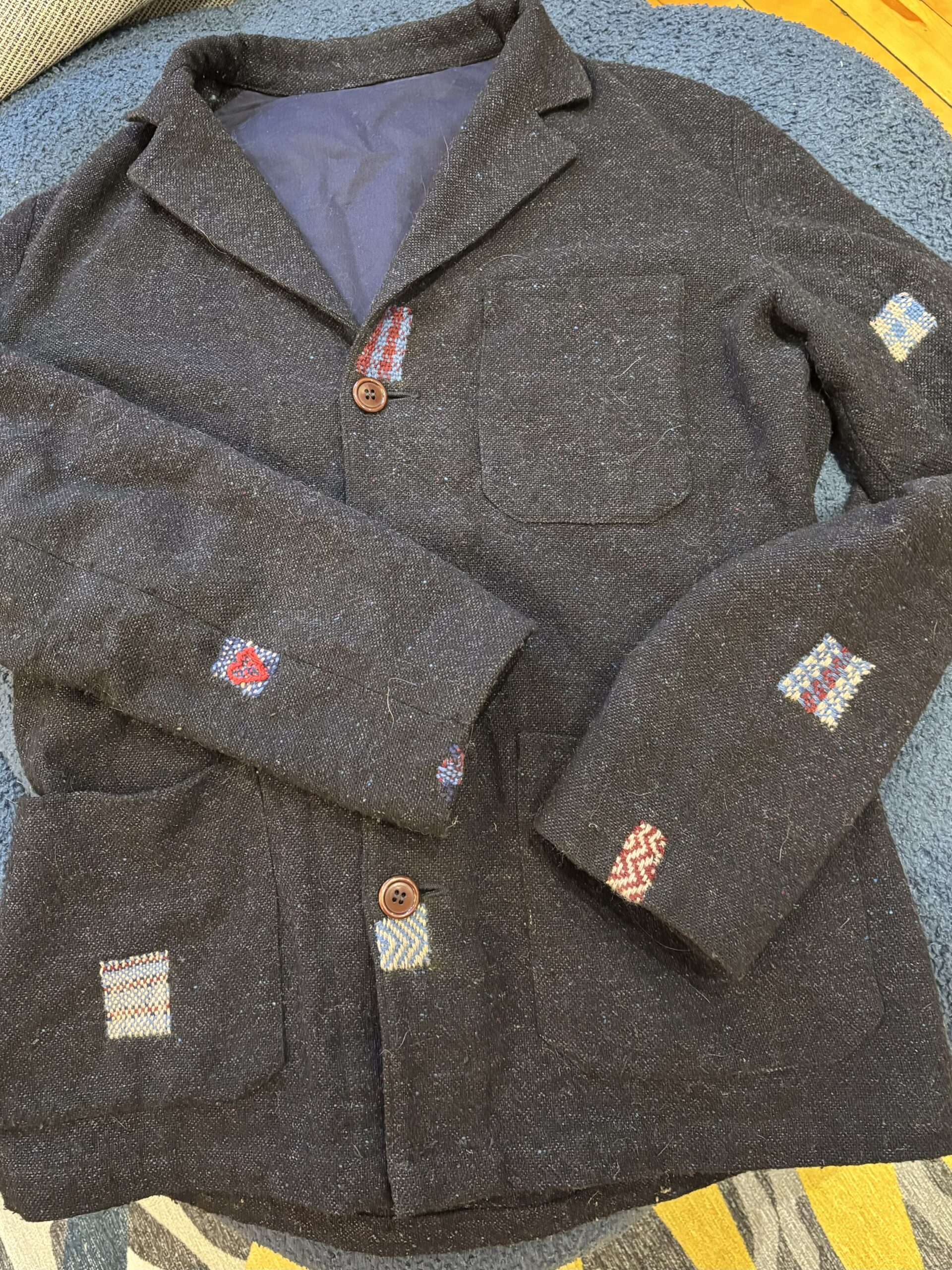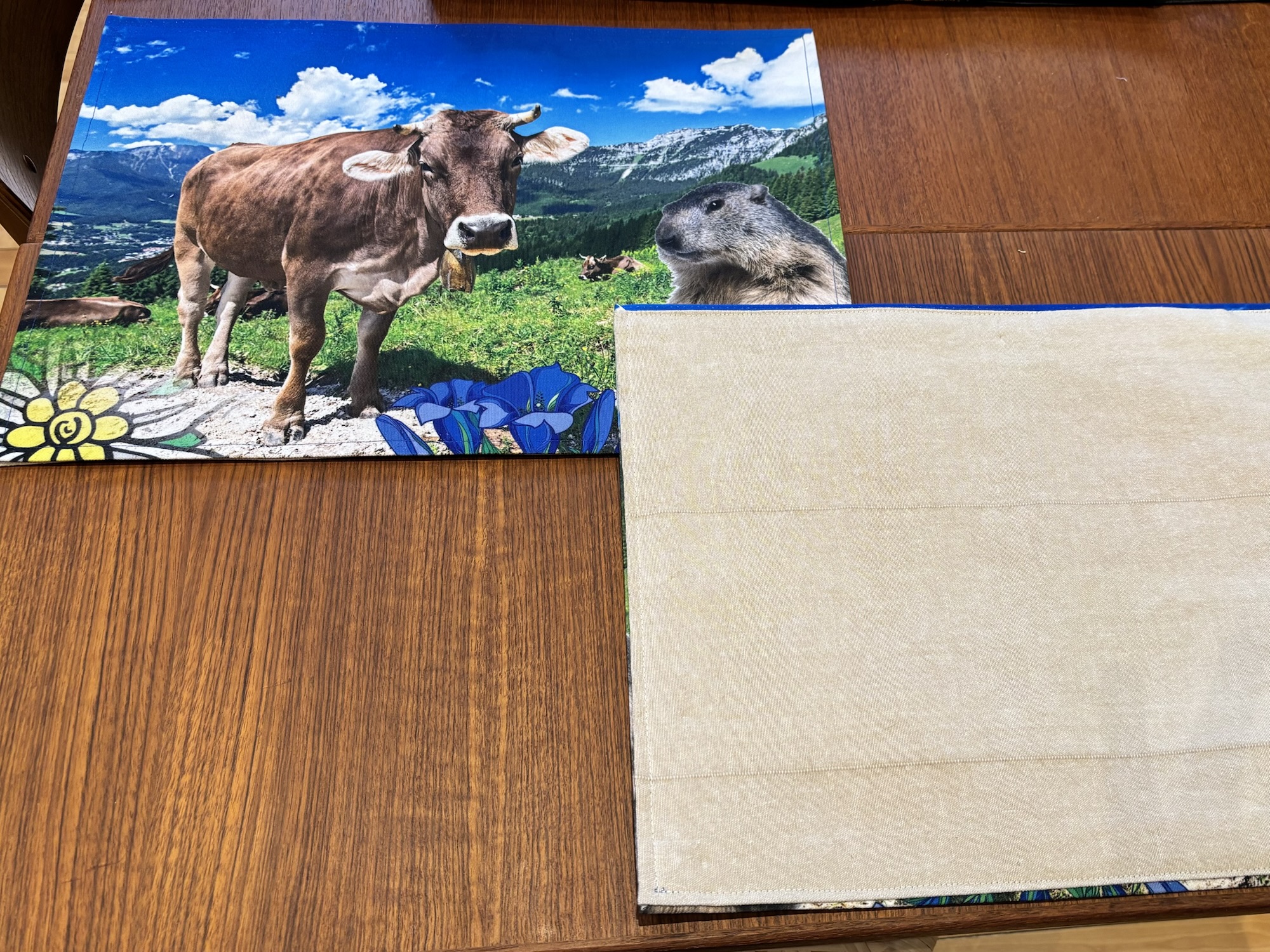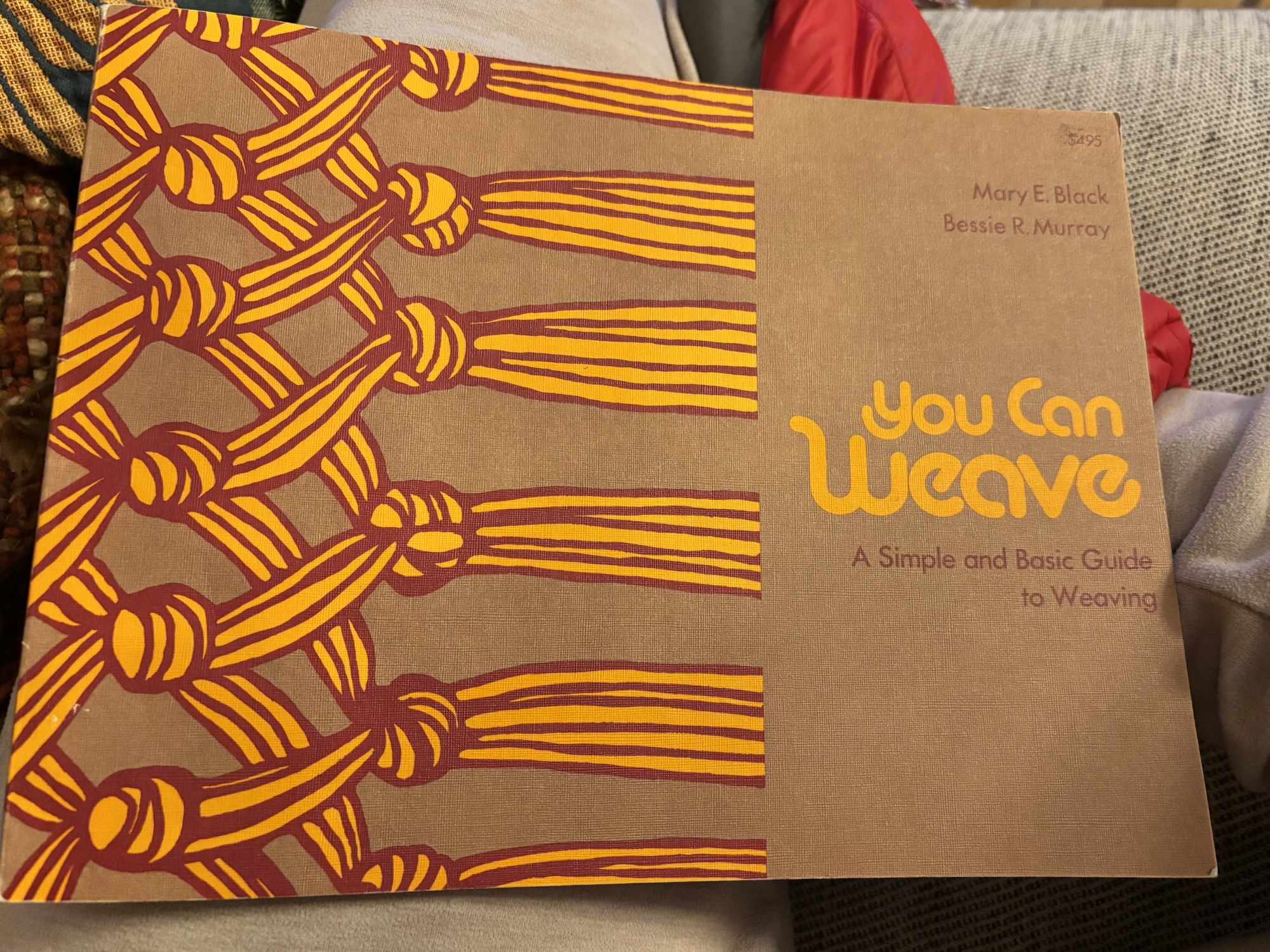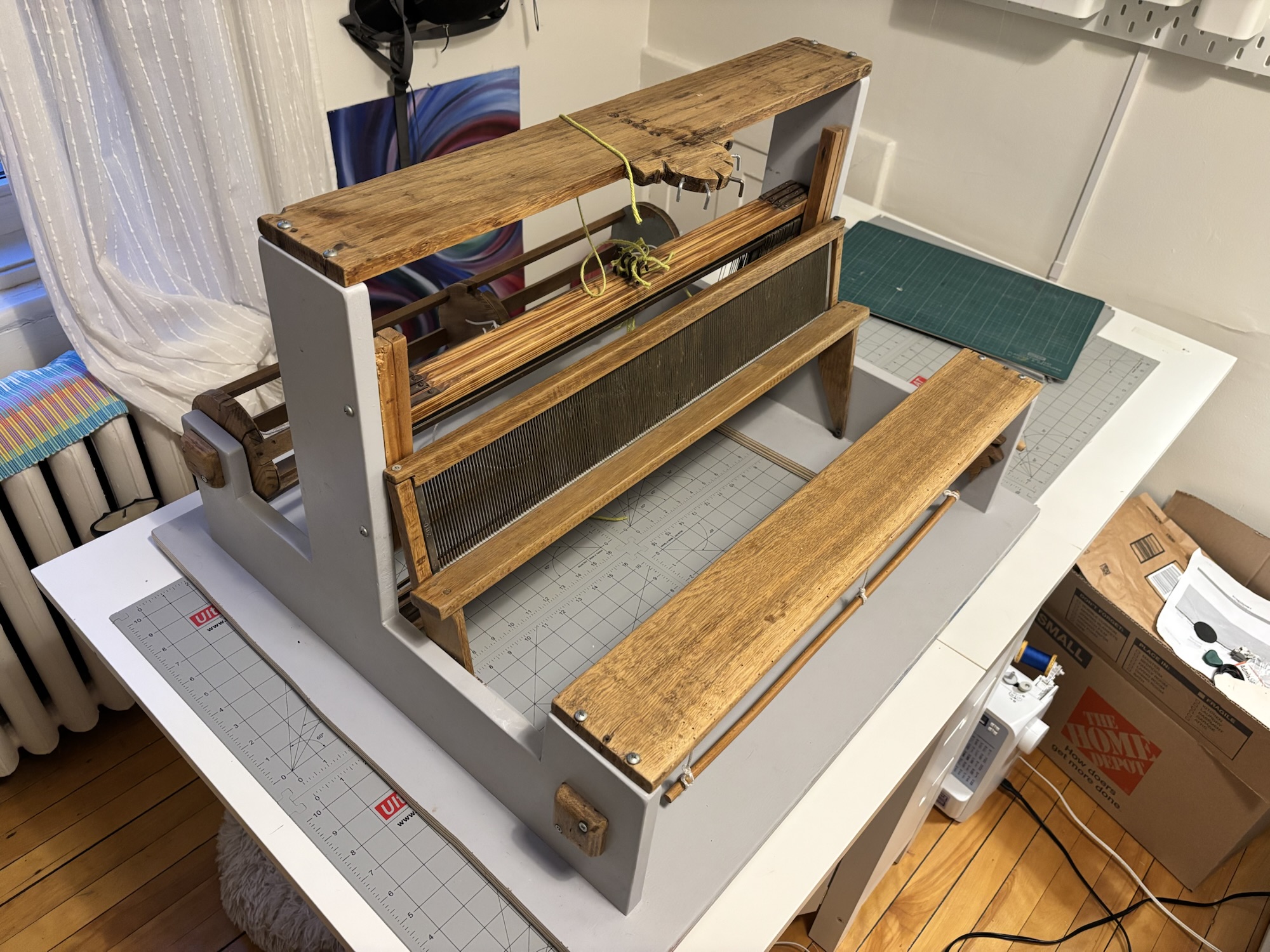
As I mentioned in my introductory post, You Can Weave has no advice on choosing a loom. It just says, quite suddenly on page 24, “Carry the warp to the loom carefully.”
Step 1: I need a loom.
There are many different types of looms. The one pictured in the book is a table loom. Table looms have the advantage of functioning like a big floor loom, but they take up less space, and are less expensive. They have multiple shafts for raising and lowering the yarns, which allows for weaving different patterns. Because they’re smaller, the fabric they produce is not as wide as the product of a floor loom.
When I say a table loom is less expensive, I don’t mean it’s not expensive. A brand new, 16-inch wide, 4-shaft table loom will run you somewhere between $700 and $1200 CAD with tax. At this price, you can count on a nice wooden device with well-functioning modern mechanics. At that width, you’ll be all set to weave things like scarves, kitchen towels, and placemats.
$700 is a hefty price for my current mood of “can I weave tho?” I balk.
Time to look at secondhand listings– which I prefer anyway. Why bring more new Stuff into the world when good old things are right there?
A perusal of the local offerings reveal that if you can find one, a secondhand table loom of mysterious quality and origin might run you about $400 CAD. It might be wider or narrower, have two or four or eight cards, be missing bits or not, and be of almost any age. They seem to sell fast, but if you can find one that suits you, you will be paying around $400 for whatever it is.
I’m feeling the urgency of this project, and don’t really understand much about looms yet, so I’m not terribly picky. After messaging a few people and striking out a couple of times, I manage to secure a 24″ loom with no brand name, that the seller assures me was ancient and falling apart, so she remounted most of it on a heavy plywood frame. She’s selling it because she doesn’t have room to keep it. Newer table looms fold away for storage. This one is permanently the size and shape that it is.
I have the benefit of:
- not relying on on modern instructions and expectations, but on the hand-drawn 1970s loom of You Can Weave
- Like most people in my family, believing without evidence that I can alter or fix anything
The Frankenloom I’m looking at is similar enough to the drawings. I decide it will be Fine.
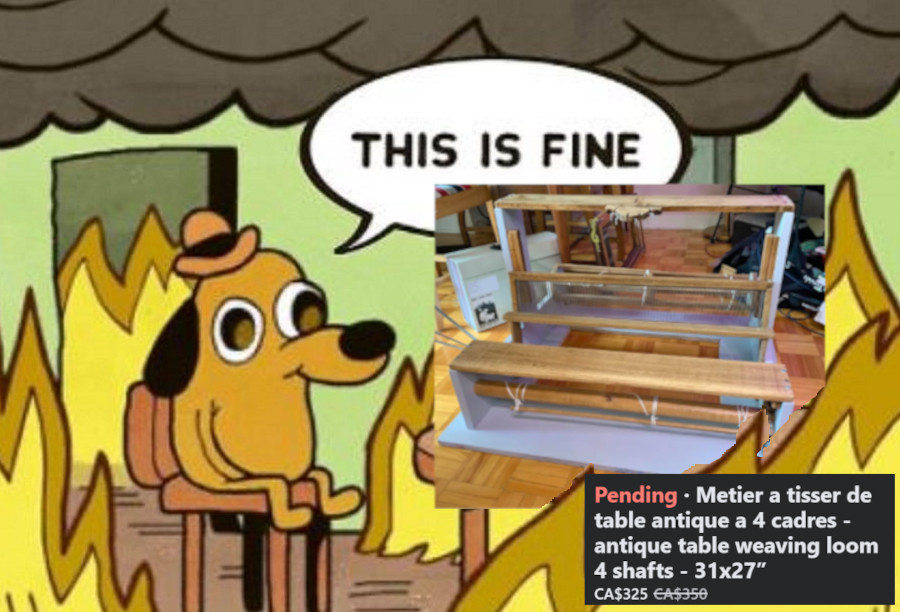
I happen to be borrowing my mom’s car for the holidays, so I take advantage, to drive up to Ahuntsic, to a community bike repair clinic where, among the bike parts and tools, in a workshop only faintly smelling of metal, grease, and rubber, I meet the seller, Quaterine, and her grandmother’s loom. She points out many things about it– how it works, what it’s missing, how I could improve it, that it needs an oiling from time to time to keep the extremely old, dry wood cooperative. I understand almost nothing of what she tells me, as I do not yet Can Weave.
Truth be known, I’m a hands-on learner, so I usually need to do a thing to really understand it. There are many pertinent questions I should probably ask, but since i haven’t done the thing yet, I don’t know how to. Quaterine tells me the 24-inch loom is cool because you can juuust get wide enough fabric out of it to make a t-shirt, skirt, or some dresses. I’m excited, and convinced enough that she has really worked with this thing, and that I will, somehow, be able to Can Weave on it, as well.
I trade her the story of my own grandmother’s weaving, and promise to send her photos from the book. She decides to let me have the loom for an even $300, and helps me carry it down the snowy half block to the car. As we walk we laugh about how as cyclists, neither of us is in the habit of thinking about parking. It’s a miracle I found a good spot in the snow. This whole morning feels like a miracle. I’m having a great time.
I get the loom home and lug it upstairs and into my office.
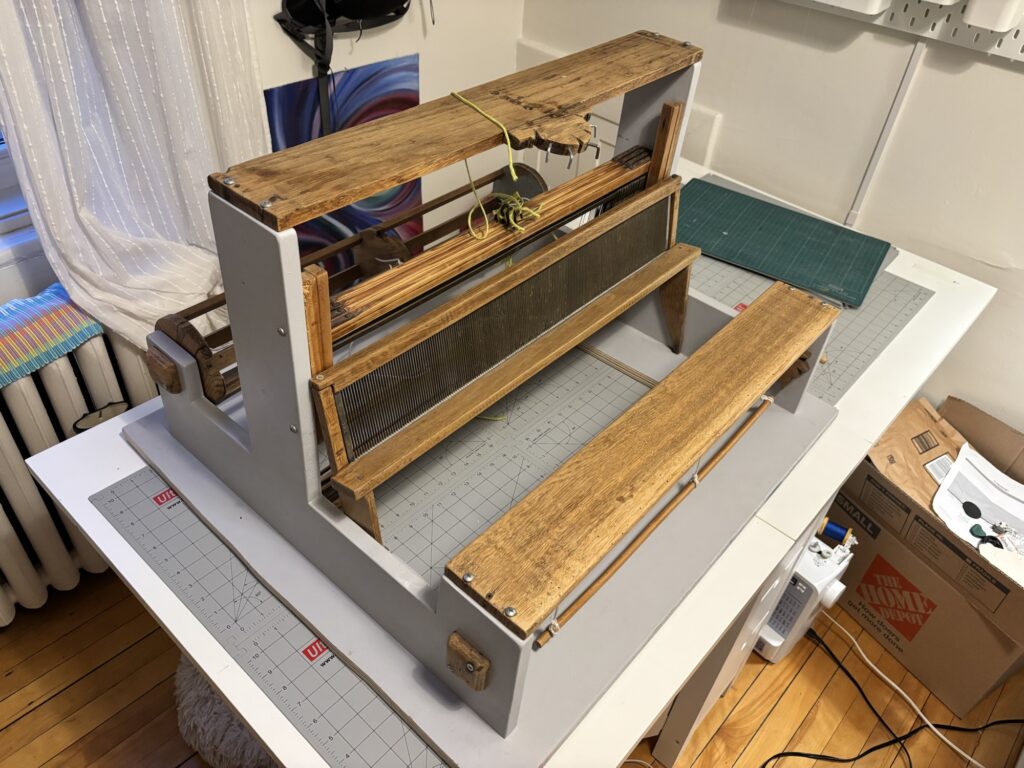
Cool. Now what? I have no idea how this thing works. The instructions in You Can Weave do not exactly match the construction of this loom. Some things are different, some things are missing, and I’m not knowledgeable enough yet to tell the difference. I don’t even know what kind of yarn I need, or where to get it.
I accept that I’ll probably need to deviate from the plan of just relying on the book, and bust out all the tutorials and videos The Internet has to offer. I begin to search. I wonder what Bessie would have thought of The Internet? As the president of the weaver’s guild, she probably would have used it to connect with weavers around Nova Scotia. If she was managing a weaving shop today, she would have needed a social media strategy. I imagine an Instagram feed where my toddler father shows up every few posts, cranking the handle of the loom, yards of Nova Scotia tartan spilling into Stories and Reels and videos, the influencer weirdness of today melding with the so-what-child-labour weirdness of yesteryear.
The loom, looms back at me. I have my work cut out.
You Can Weave – archives
- April 2025 (2)
- January 2025 (3)
